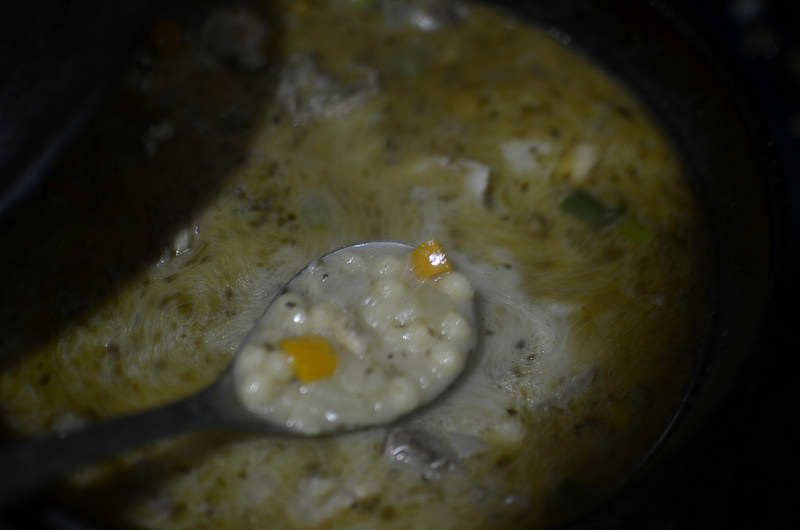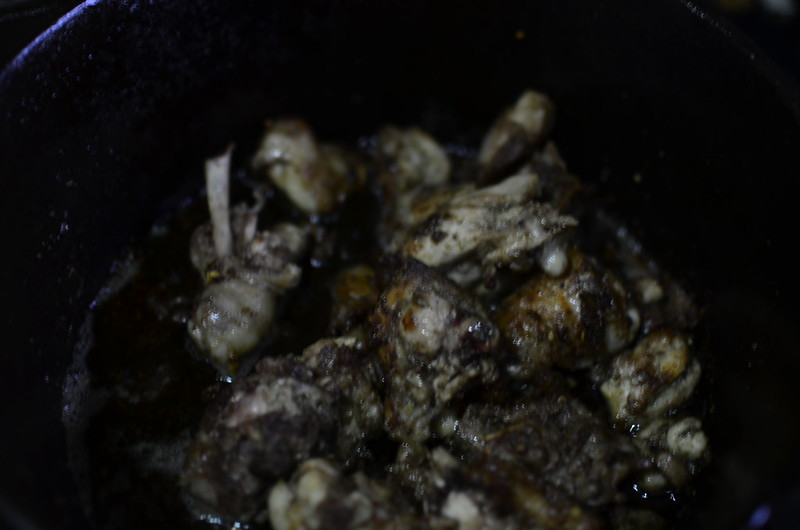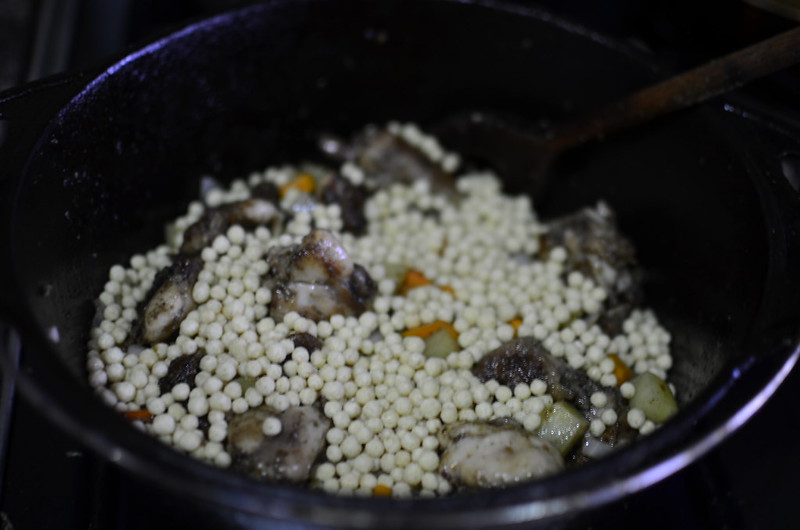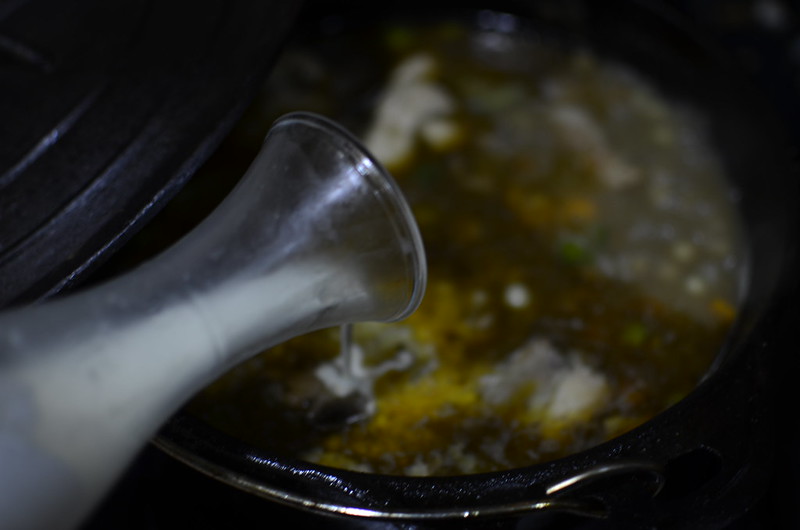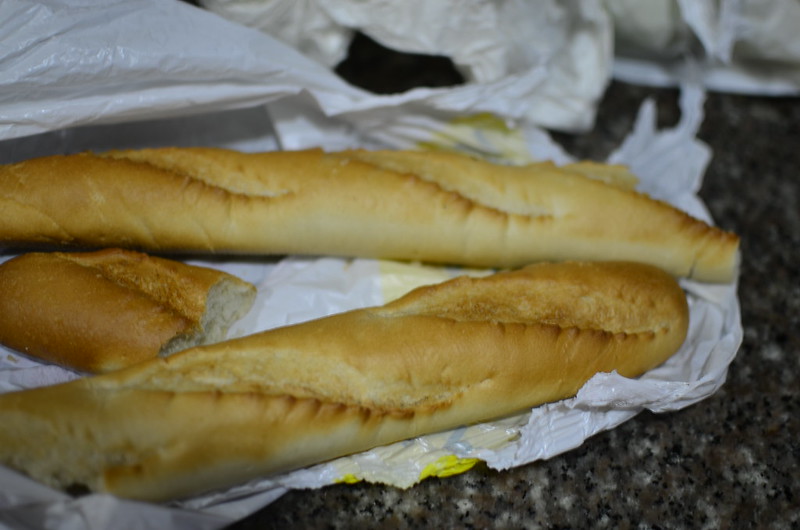You can take any combination of grains/ legumes and vegetables to cook up an amazing soup. Well, almost any. As long as you have the basics right, you can slay every single time.
Using meat? Brown it first.
Start off with whatever ‘meat’ you’d like, cut in small chunks.
I like to make my soup in a cast iron pot. I start off by heating it, and lightly greasing. I’m always of two minds – put the meat in without any fat and let it render its own .I must confess this works better with chicken and bacon, but not so with beef.
Anyhow, to develop flavour, I brown the meat, till it turns golden, lightly seasoning with salt and pepper – chili flakes or black peppercorns. When the meat is done gathering flavour, drain the rendered oil off and reserve if you like.
Options – skip meat and head straight to the veg.
Rainbow veg – the size is right
While the chicken browns, I chop up the veg. Onions I consider essential for flavour, sometimes a clove or two of garlic is good. I use a combination of hardy roots – carrots and potatoes. There’s also some green bell pepper but I save it for the end so it doesn’t soften and grey out. Plus it releases its peculiar fresh flavour right at the end.
I add it to the meat which has good colour and stir well so each chunk, dice is coated in the oils and juices. Then I move on to the next stage.
Options – use other veg combinations – peas and beans, cauliflower, brocolli, sweet potatoes, pumpkin and squashes all work well.
Season how you like
Salt and pepper are essential to draw out flavours but don’t limit yourself to those two. I used Za’atar – a Middle Eastern blend of seeds and herbs which is nutty and fragrant and oh so lovely.
Coriander seeds and cumin work a treat with orange vegetables, dried herbs, sun-dried tomatoes also add a punch of nuanced flavour which blends well.
Add the grains, pulses
I add the grains which take under an hour to cook – mograbieh, pasta, tinned beans (rinsed), split peas and lentils. For longer cooking grains and pulses, I prefer to pre-cook them and finish them off now. They add heft and cream to a soup.
I toss, and let them toast – barely before the liquid goes in. Most grains double in volume so be mindful of how much you use.
Liquid – water, stock
I cover the pan contents with water quite often. If I have clear stock at other times, I do a mix. This is when the flavours get to meld and marry. I cover the contents with water and then some. And then it’s time to leave and simmer. I check for seasoning, stirring every few minutes. I like to add just a bit of fresh chilies, chopped up and just enough to hint at heat without overwhelming it.
Once simmering is done, it is clear to see. Often, a lot of the oils are drawn out of the meat. You can skim it off, mop it with thick paper towels. One effective way is refrigerating overnight so the fat hardens and then
The lid goes on the pot and I get ready to finish.
Finishing off – cream, herbs, whatnot
I do my best to skim off the oil but I’m not always successful. Sometimes I add a dash of cream just for a richer flavour, other times I don’t. Most of all, I like to finish off with a handful of herbs.
Accompaniments
Bread. Toast. Bread. And butter. Very simple.
The End
And there it is, all ready for you to feast. The photo doesn’t do it justice and I apologise but can you imagine the deliciousness? Can you?

Use this as a starting point and make a host of soups, for any occassion including Iftar.
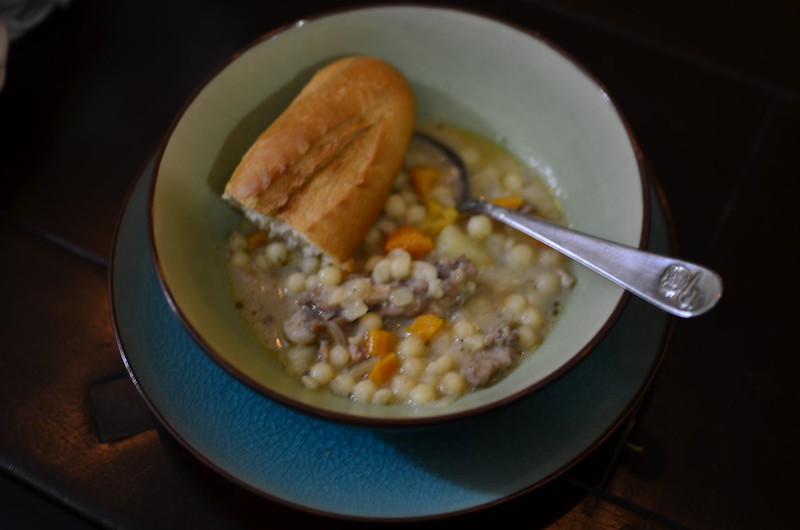 [wpurp-searchable-recipe]The Art of Soup – – – [/wpurp-searchable-recipe]
[wpurp-searchable-recipe]The Art of Soup – – – [/wpurp-searchable-recipe]

